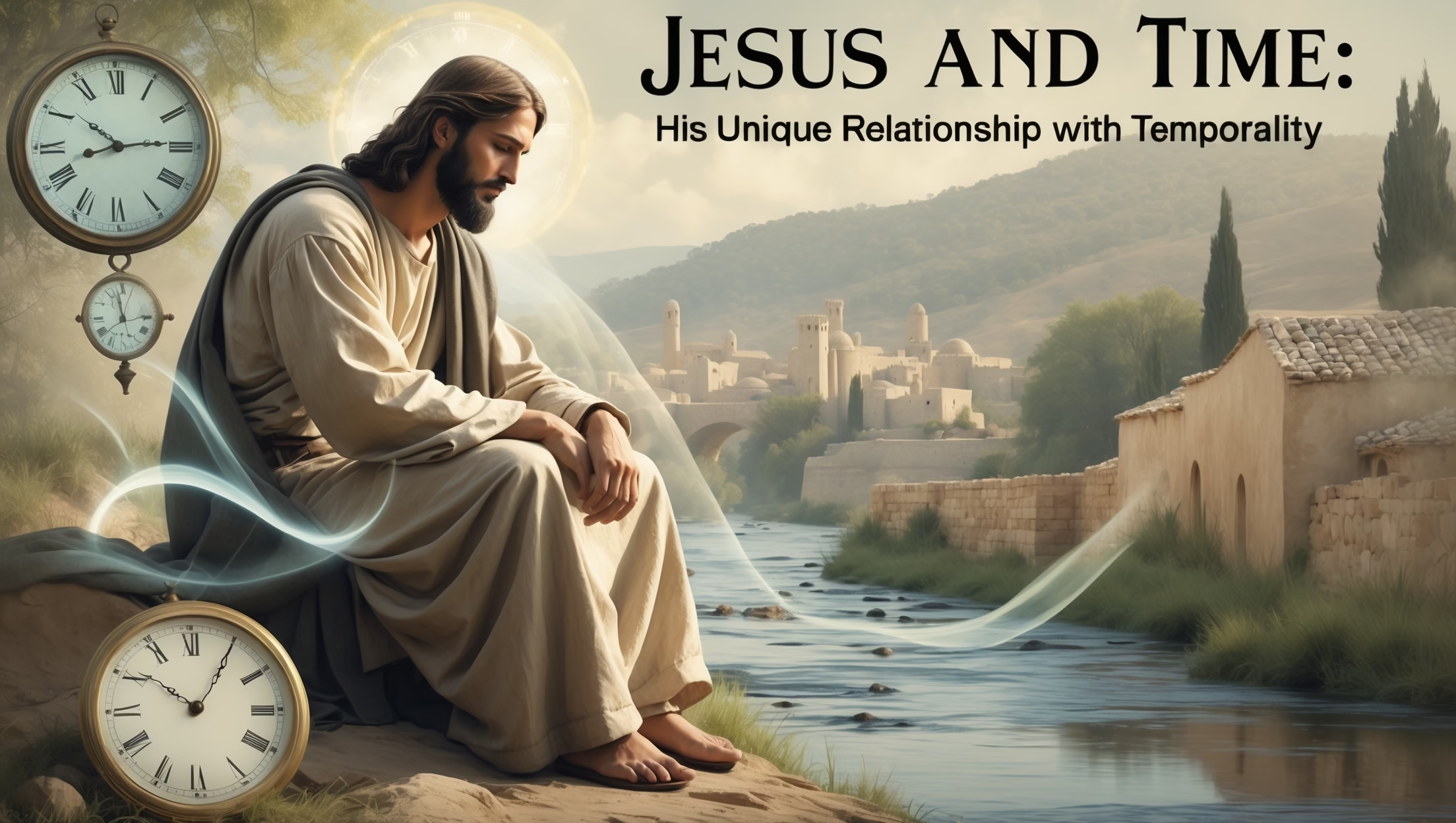The Eternal Now of the Messiah
Jesus’ ministry frequently challenges our conventional understanding of time. In scripture, He speaks and acts in ways that reveal a fluid, profound relationship with temporality—one that combines divine omniscience, human experience, and theological symbolism. While humans measure life in hours, days, and years, Jesus embodies a rhythm that transcends mere chronology. Exploring His relationship with time illuminates both His divinity and the practical lessons for spiritual life today.

Chronological Paradoxes in the Gospels
Several key passages highlight the Messiah’s unique engagement with time:
- “Before Abraham was, I AM” (John 8:58): This statement uses the Greek present tense “I AM” (ἐγώ εἰμι), emphasizing a continuous, eternal existence. Jesus’ words do not merely reflect pre-existence but suggest timelessness, a mode of being outside ordinary sequential time.
- Missed Deadlines and Parables (Matthew 25:1-13): The parable of the ten virgins underscores human dependence on punctuality, preparedness, and expectation. Ancient timekeeping—often based on sundials and water clocks—was imprecise. The story emphasizes spiritual readiness over rigid chronological control, inviting reflection on the divine perspective of “on time.”
- Miracles and Timing: Many miracles, such as Lazarus’ resurrection (John 11:38-44), occur precisely when Jesus declares it, illustrating a mastery over natural and human temporal constraints. These acts suggest a synchronization of divine will with human history that transcends ordinary time.
These paradoxes show that Jesus’ ministry operates in an “eternal now,” where past, present, and future intersect in ways humans rarely perceive.
Scientific Interfaces: Time, Relativity, and Omnipresence
Modern science provides conceptual tools for understanding aspects of Jesus’ temporal mastery:
- Quantum Physics and Omnipresence: Concepts such as quantum entanglement and nonlocality parallel theological claims of omnipresence. Just as particles can exhibit connections beyond spatial constraints, Jesus’ actions suggest presence and awareness that are not limited by temporal sequence.
- Relativity Theory Applications: Einstein’s relativity demonstrates that time is relative to the observer. While humans experience linear, sequential time, divine temporality may exist in a form where events are accessible simultaneously, a concept that resonates with Jesus’ foreknowledge and prophetic awareness.
- Chronobiology and Human Perception: Studies in chronobiology reveal that humans perceive time subjectively. Jesus’ teaching rhythm—frequent pauses for prayer, reflection, and Sabbath observance—models a divine-aligned tempo that contrasts sharply with human busyness and stress.
Through these lenses, the Messiah’s relationship with time becomes not only a theological claim but a model for understanding existence and presence in the universe.
Timekeeping in First-Century Palestine
Understanding the historical and cultural context of time helps illuminate Jesus’ ministry:
- Jewish Festivals and Lunar Calendar: The Jewish calendar was lunisolar, causing feast dates to shift relative to the solar year. Jesus’ references to Passover, Pentecost, and other feasts interact with these fluid time markers, suggesting attentiveness to cyclical rather than strictly linear time.
- Daily Life and Labor Rhythms: Villagers measured days by natural markers—sunrise, midday prayers, and sundown. Jesus’ itinerant ministry, including early morning retreats (Mark 1:35) and nighttime teachings (John 3:2), shows intentional alignment with natural rhythms rather than rigid schedules.
- Symbolic Use of Time in Parables: Stories like the workers in the vineyard (Matthew 20:1-16) employ hours of the day symbolically, representing divine justice rather than precise chronology. This metaphorical use emphasizes God’s timing over human expectations.
The Messiah’s ministry thus situates temporality in both cultural context and theological depth.
Modern Spirituality: Lessons from Jesus’ Temporal Rhythm
Jesus’ unique temporal perspective has practical implications for contemporary spiritual life:
- Busyness vs. Unhurried Ministry: In modern culture, productivity and deadlines dominate life. Jesus models an unhurried rhythm, punctuated by prayer, retreats, and intentional pauses. This approach offers a countercultural lesson about presence, focus, and spiritual attentiveness.
- Sabbath Time Theology: Observance of the Sabbath (Luke 4:16; Mark 2:27-28) reflects divine timing in human life. Time is not merely a resource to exploit but a sacred space for rest, reflection, and connection with God.
- Spiritual Preparedness and Eternity: Parables concerning readiness, such as the ten virgins and the talents (Matthew 25), teach that temporal awareness—preparing for the “eternal now”—is a core component of faith. This encourages mindfulness and intentionality in daily life.
By following Jesus’ temporal model, believers can navigate the tension between human schedules and divine rhythm.
Theological Implications: Time and Divinity
Exploring Jesus’ temporality deepens theological understanding:
- Foreknowledge and Free Will: Jesus’ awareness of future events—prophetic insights, resurrection timing—balances divine foreknowledge with human freedom. This interplay shows a complex understanding of temporality where God’s knowledge does not nullify human choice.
- Eschatological Timing: References to the “end times” (Mark 13:32) reinforce that divine time operates on a different plane than human chronology. Believers are invited to trust God’s timing even when events appear delayed or out of sequence.
- Integration of Past, Present, and Future: Jesus’ ministry illustrates that divine action is not bound by temporal order. His teaching, healing, and miracles simultaneously address historical context, immediate need, and eternal significance.
This theological framing invites believers to engage with time as a medium for spiritual growth, not merely a sequence of events.
Key Insight: Embracing the Eternal Now
By examining scripture, historical context, and scientific parallels, we see that Jesus’ relationship with time is multifaceted. He navigated human temporality, engaged natural rhythms, and acted with divine foresight. His ministry challenges conventional perceptions, offering a model of presence, mindfulness, and spiritual alignment.
Understanding the Messiah’s temporal mastery encourages a holistic spirituality where faith, practice, and reflection operate in harmony with divine rhythm. Time, in Jesus’ ministry, is not merely measured—it is lived, experienced, and sanctified.









